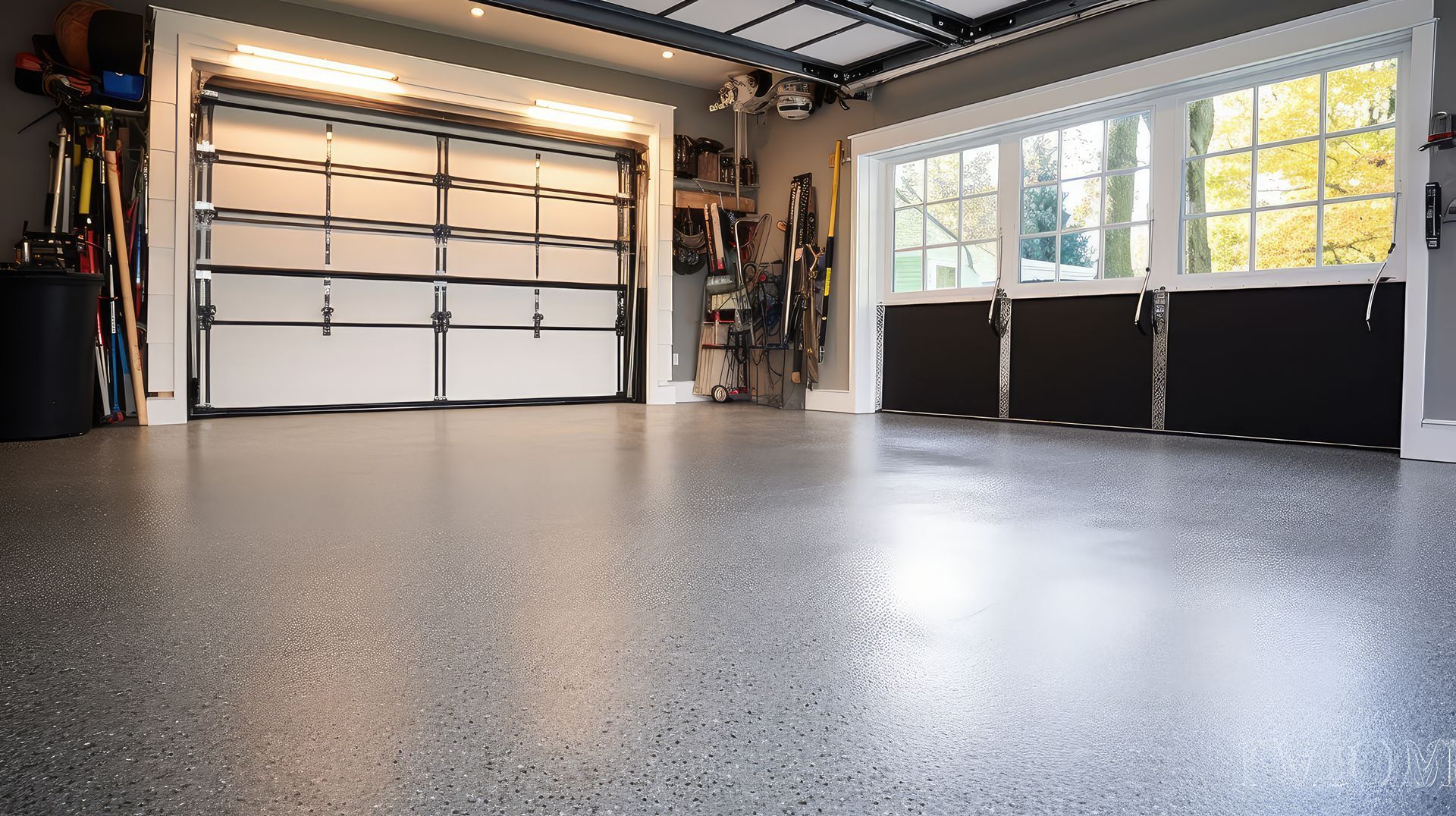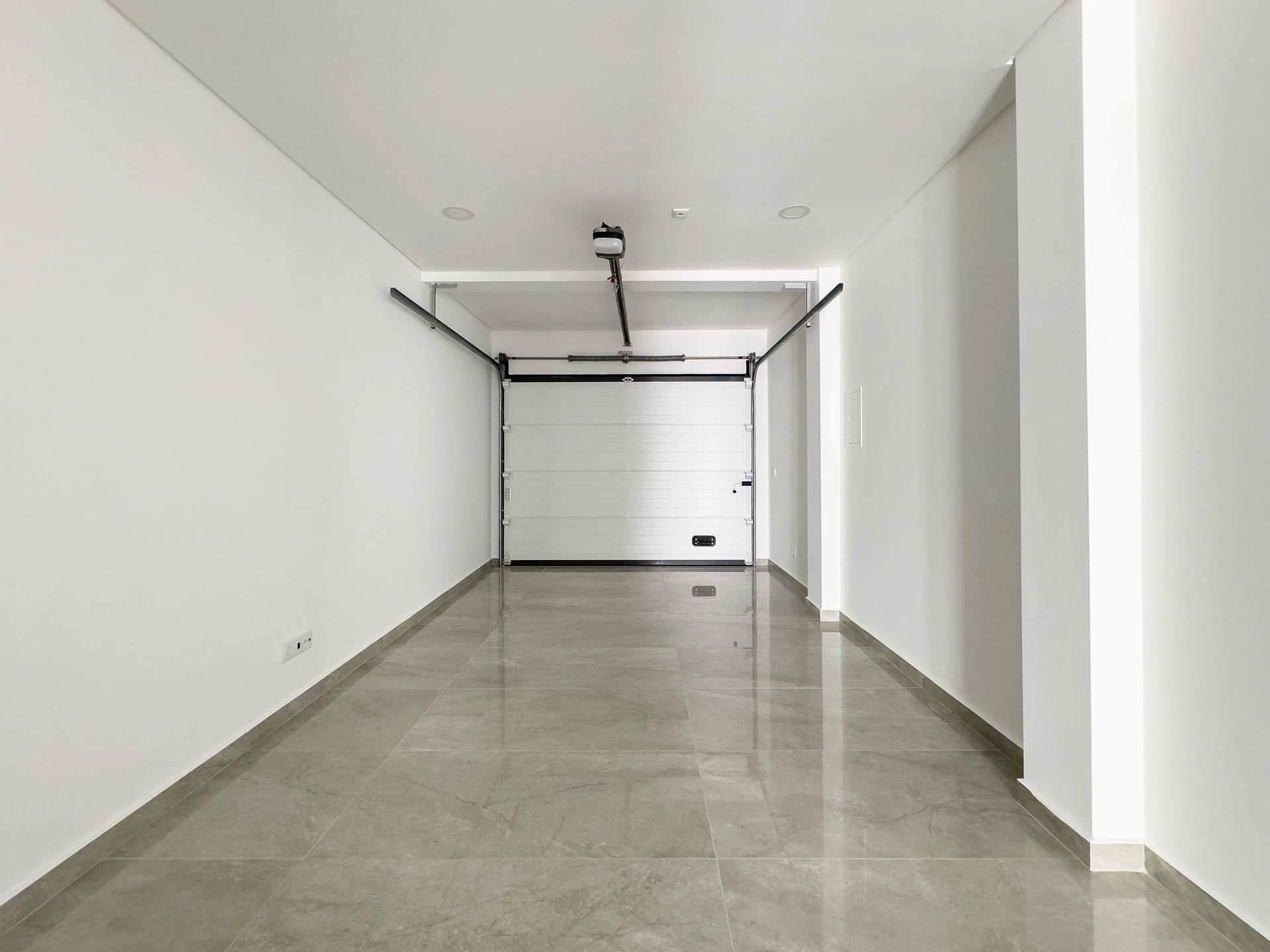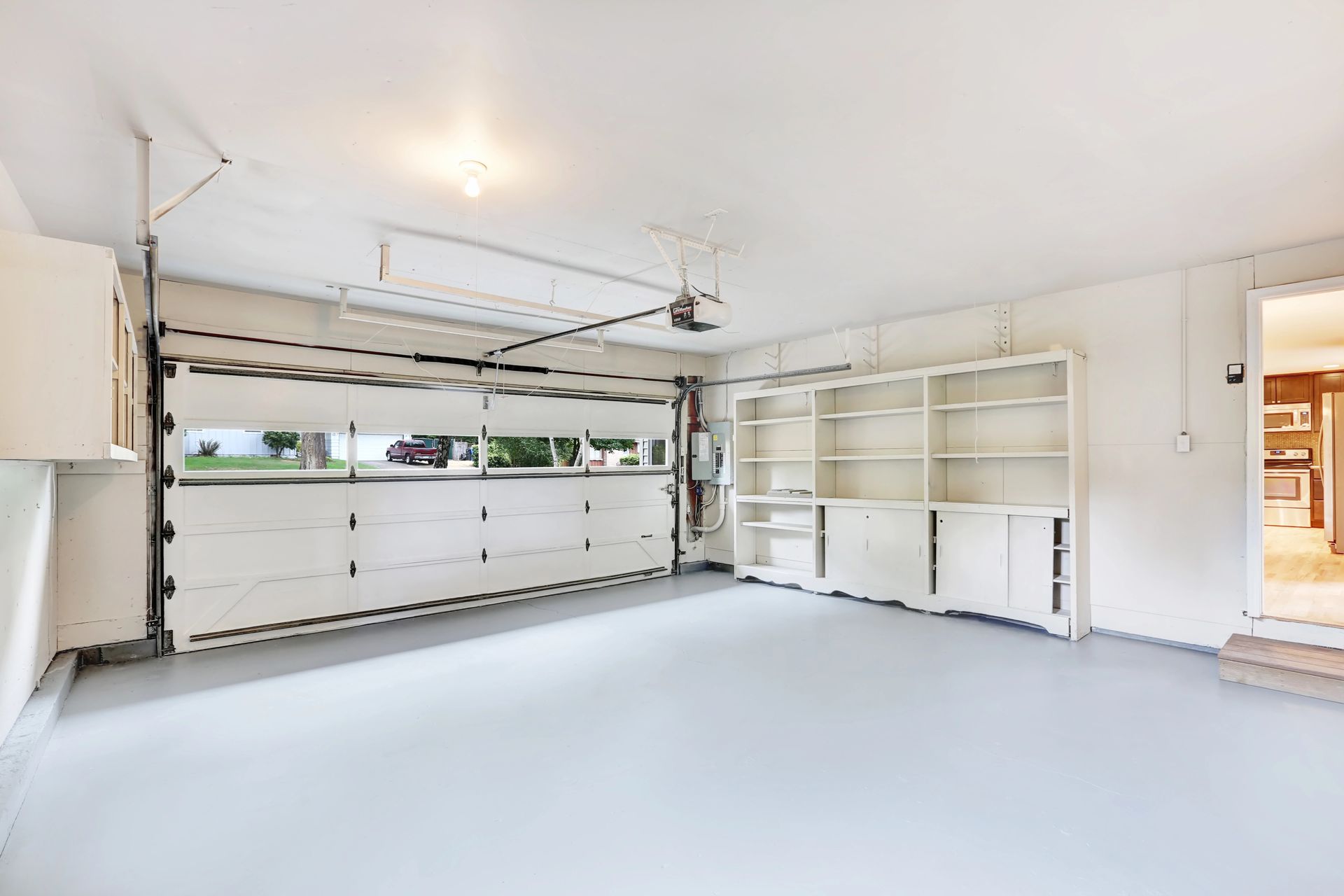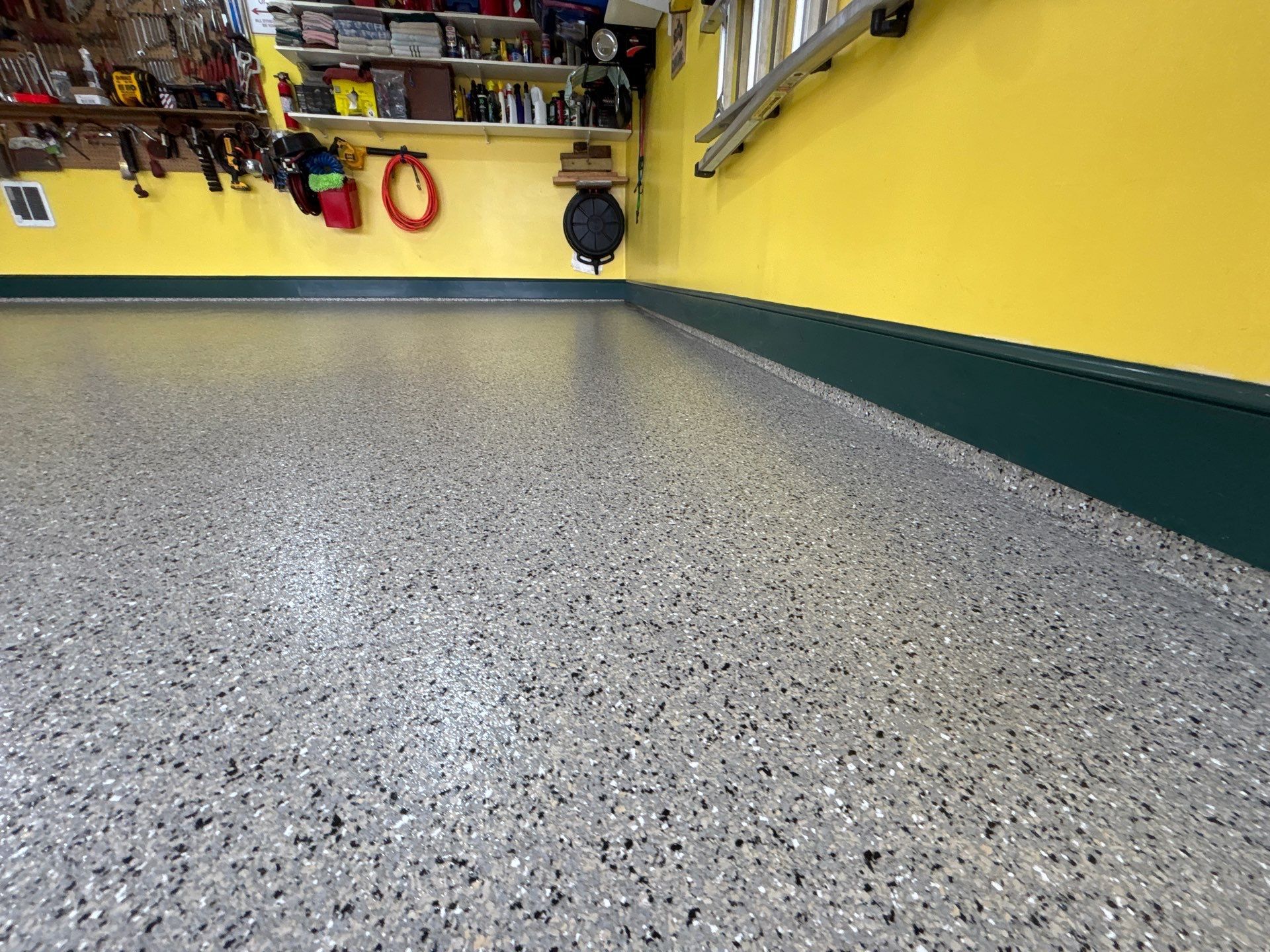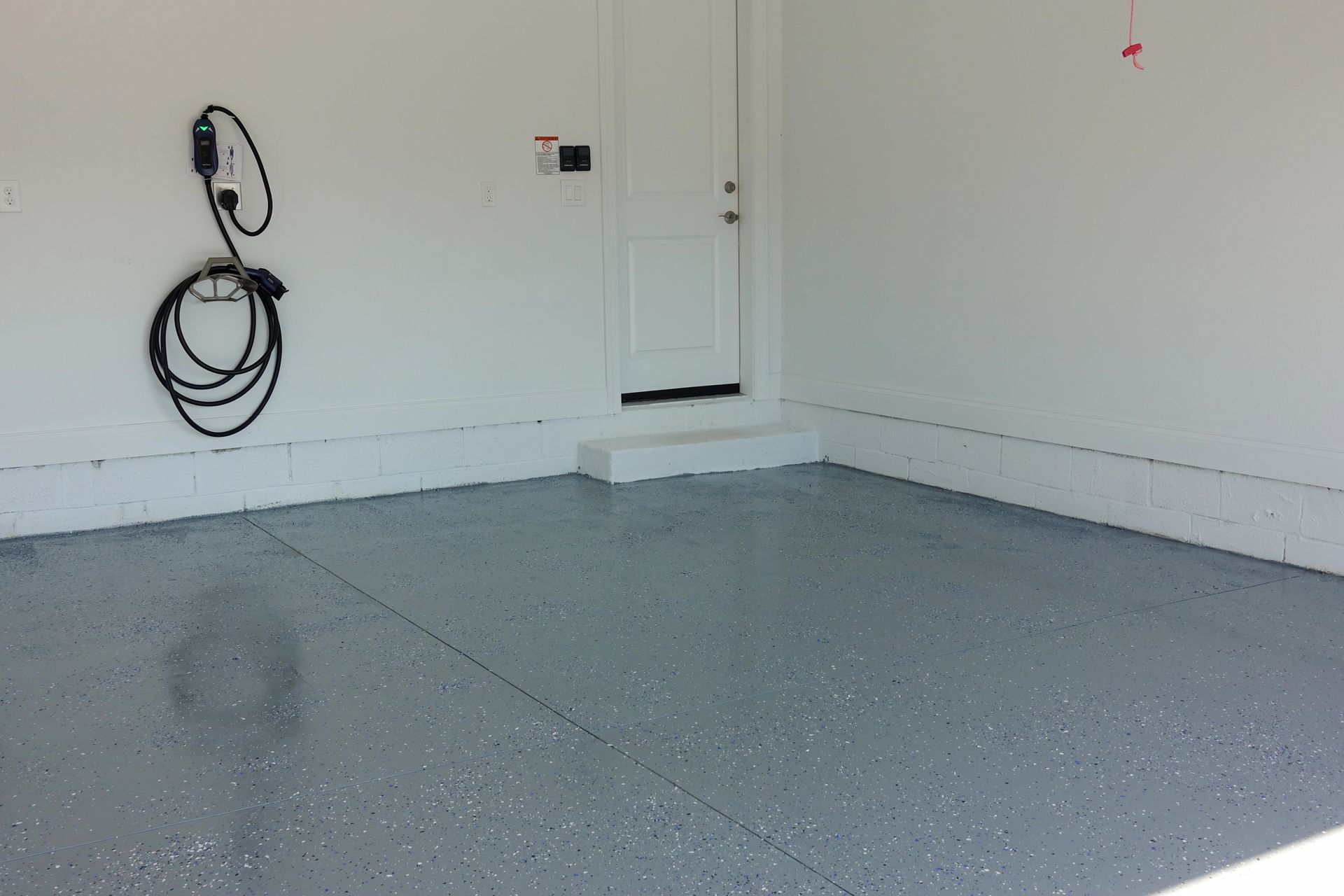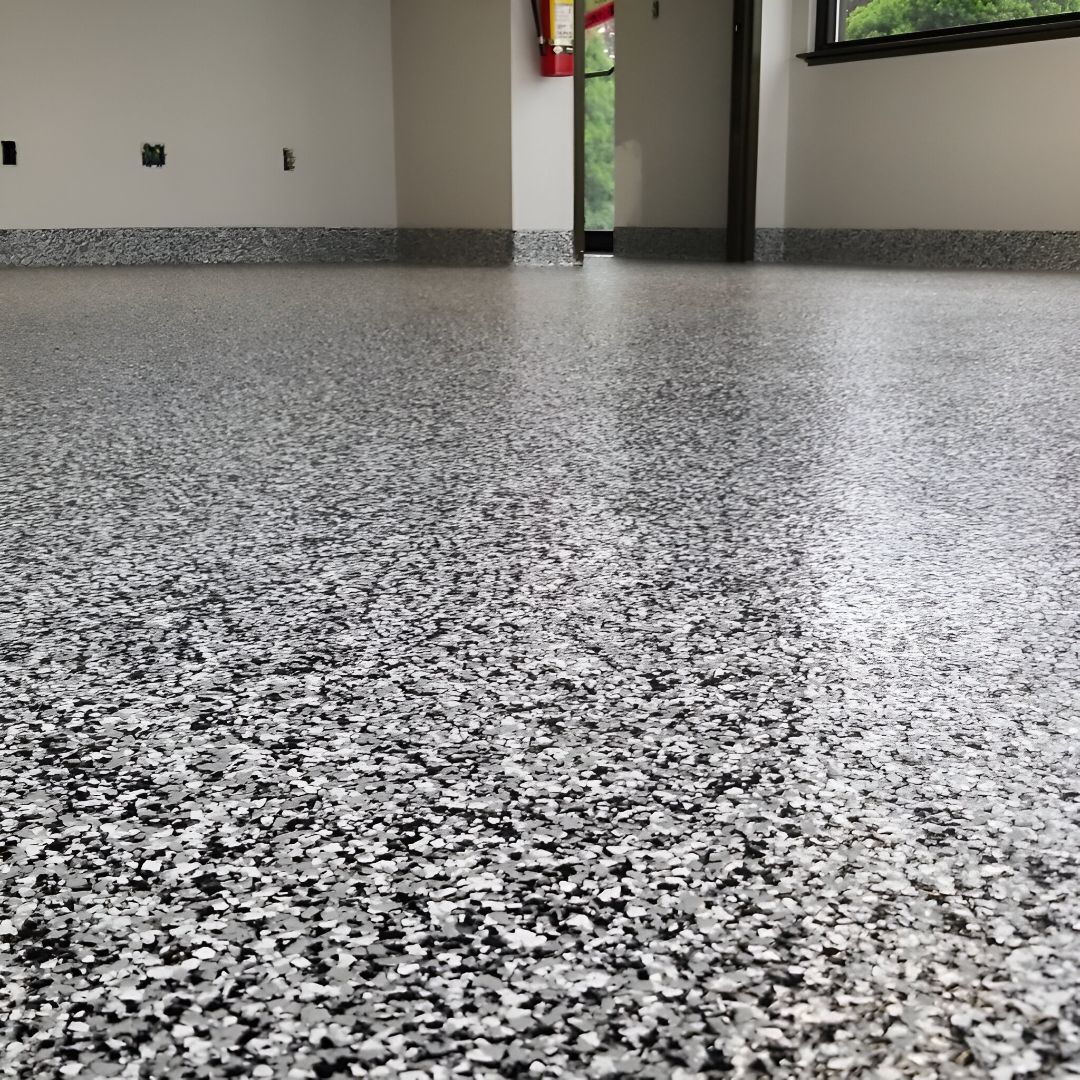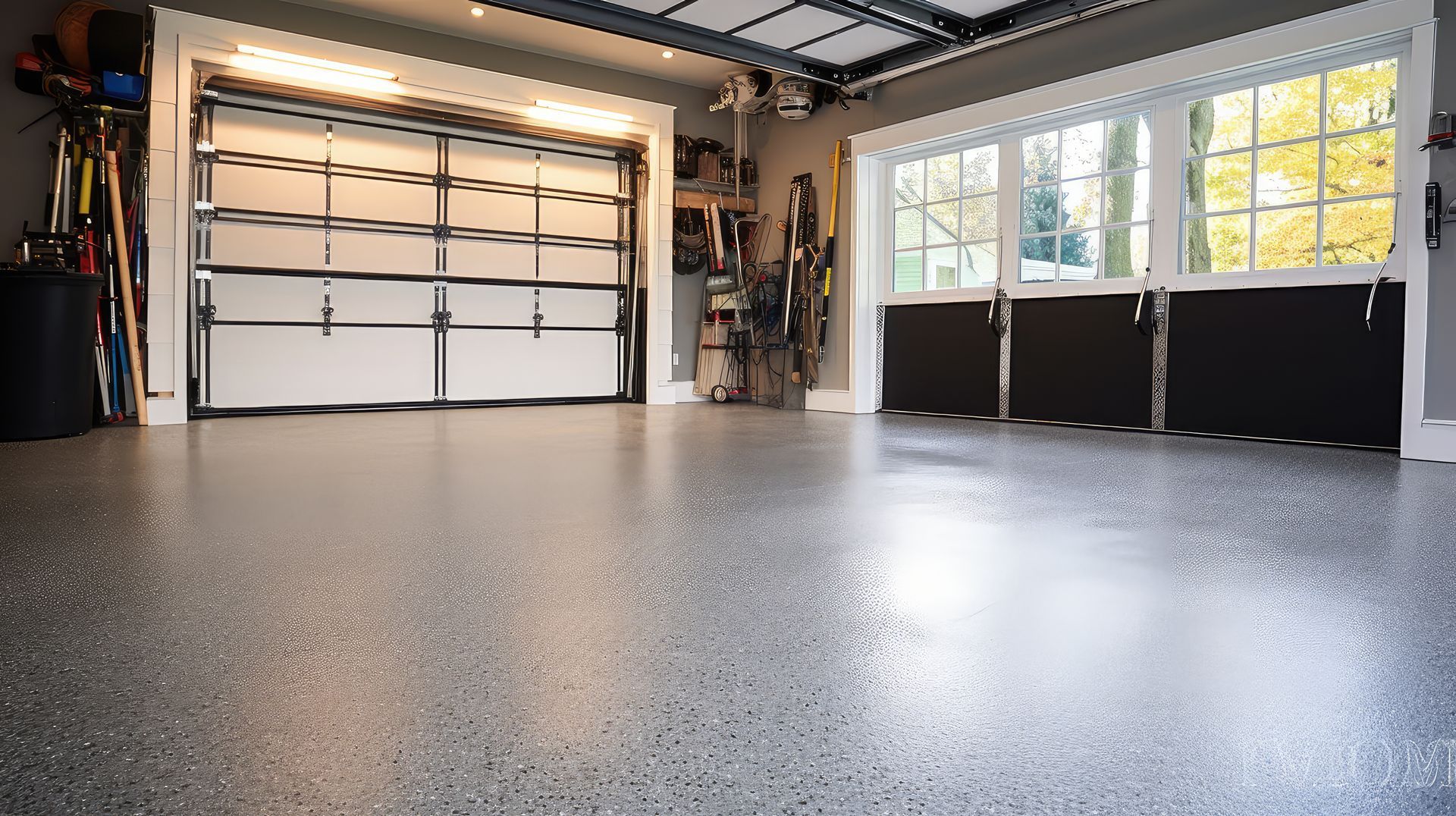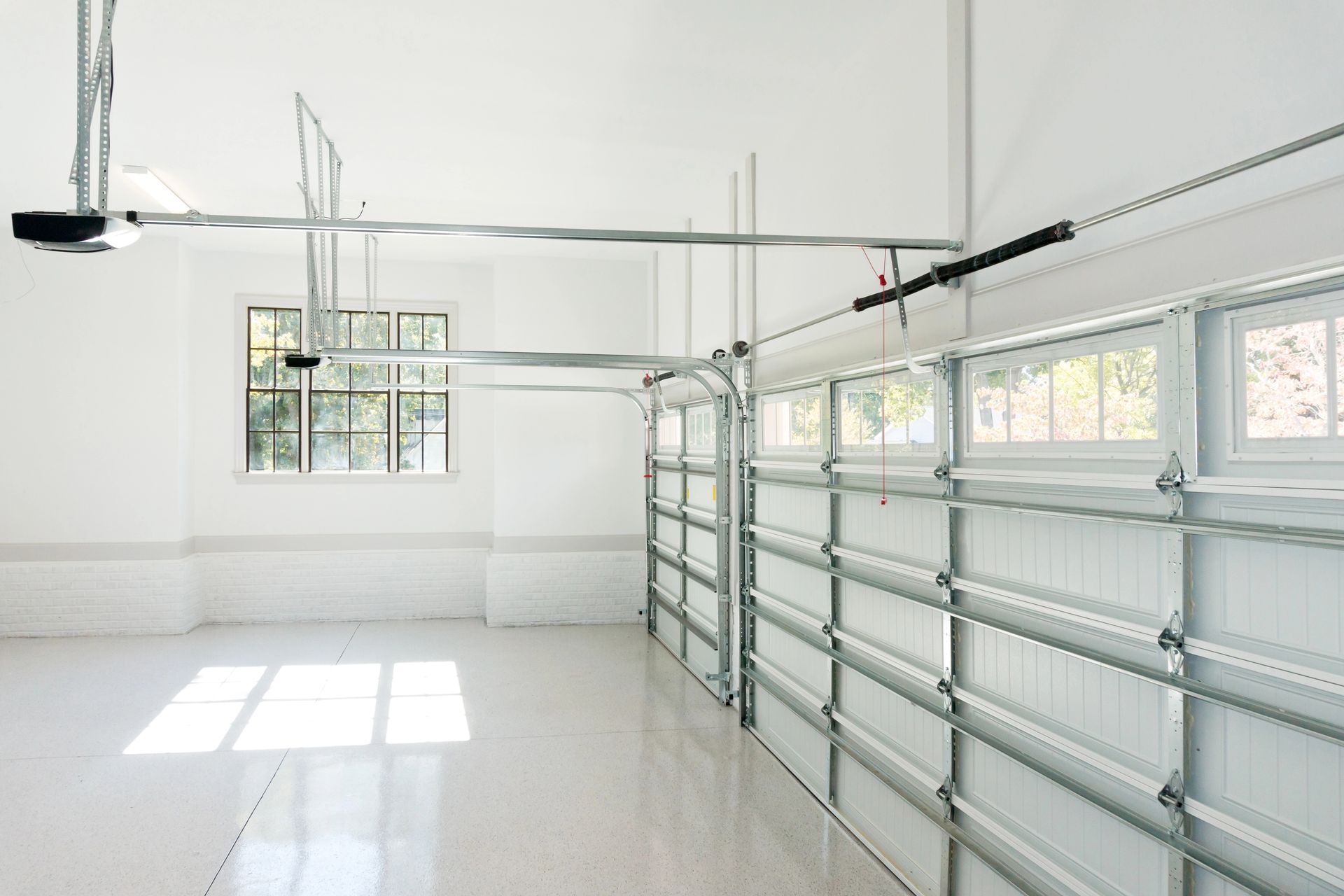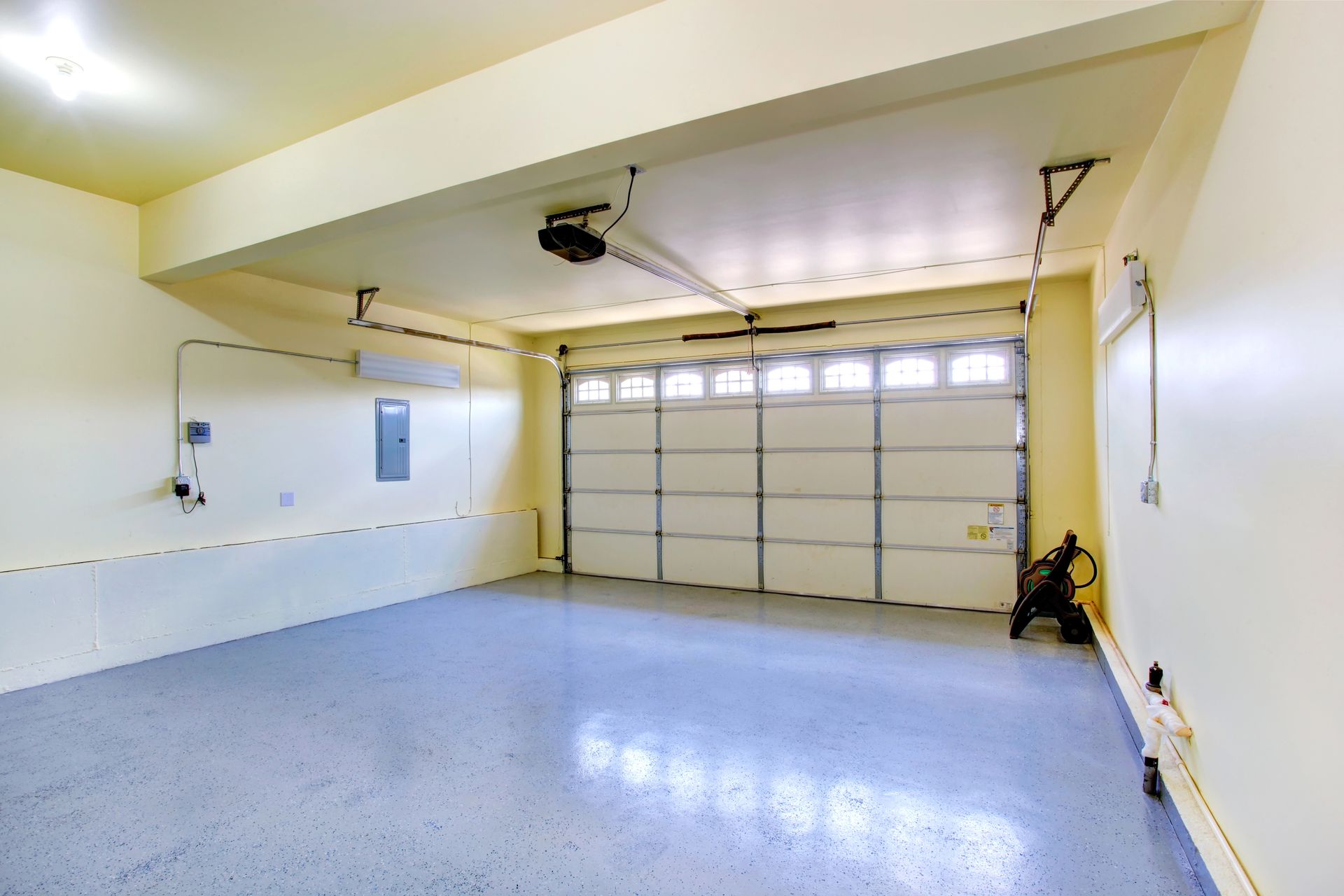Epoxy vs. Garage Floor Tiles vs. Mats
Key Takeaways
- Tiles and mats offer quick cosmetic fixes, but they don’t solve underlying concrete issues or protect against freeze–thaw cycles, moisture, and road salt.
- Epoxy provides a harder surface but struggles with flexibility and long-term durability in Pennsylvania’s climate.
- Professional polyurea systems outperform all three by bonding deeper, flexing with seasonal movement, and resisting chemicals, impact, and hot-tire pickup.
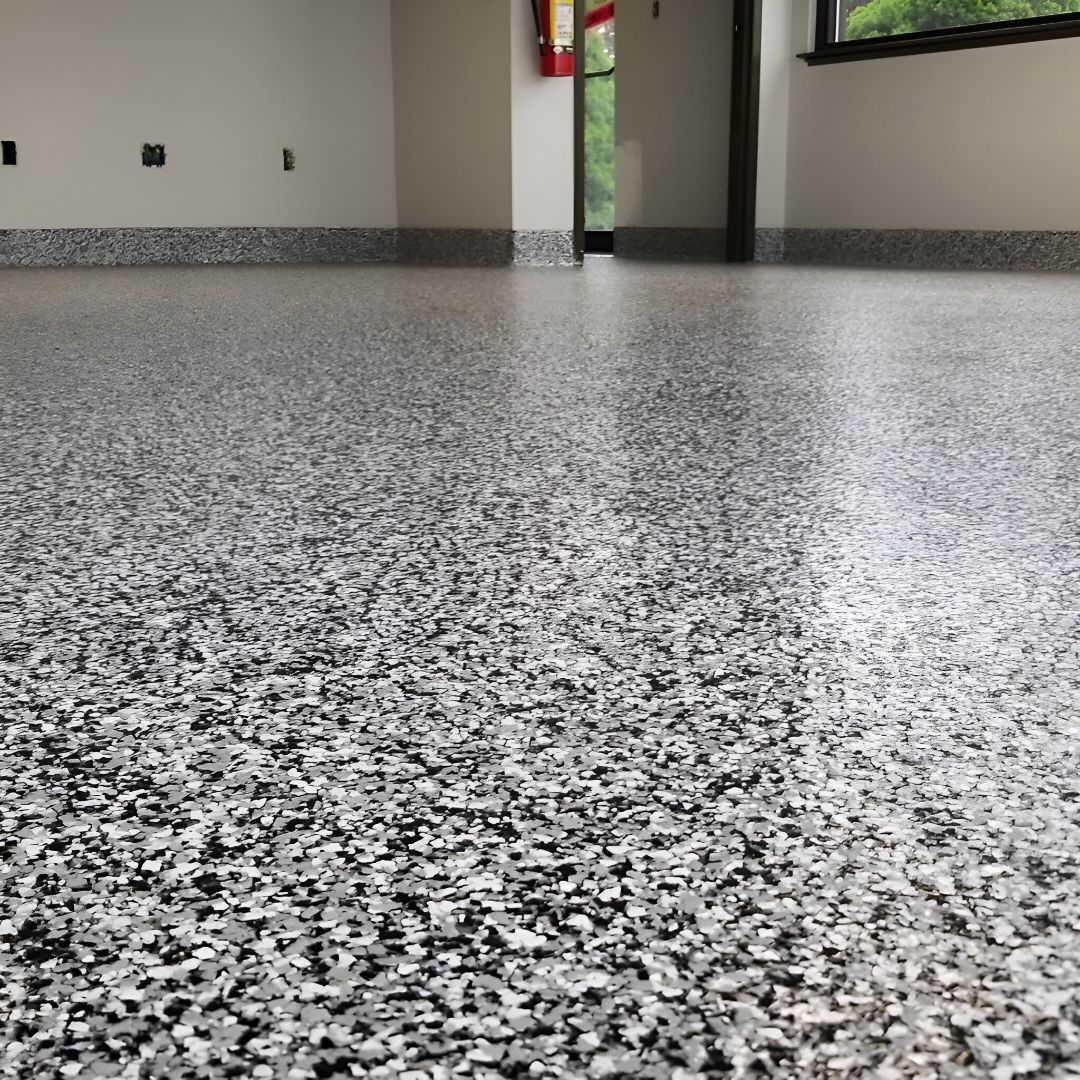
When homeowners look to improve their garage floor, three options usually rise to the top: epoxy coatings, interlocking tiles, and large-format garage floor mats. Each has its place, but the right choice depends on how you use your garage—and how much durability you need through Pennsylvania winters.
Below, we break down how each option performs, their pros and cons, and why many homeowners ultimately choose a professional polyurea system when the goal is long-term protection.
Epoxy Garage Floor Coatings
Epoxy is one of the most familiar garage floor upgrades. It creates a hardened surface that looks sleek when first installed, especially with flakes or tints. But real-world garage use reveals some limitations.
Pros
- Clean, uniform look
- Protects against mild spills and stains
- Budget-friendly compared to tiles
- Can be customized with color flakes
Cons
- Rigid—can crack or peel with freeze–thaw cycles
- Prone to hot-tire pickup in active garages
- Sensitive to moisture vapor
- Long cure time (3–5 days before driving)
- UV exposure can yellow or fade the surface
Epoxy can work for homeowners who want a short-term improvement and don’t mind periodic touch-ups. But if the goal is durability through snow, salt, and humidity swings, epoxy struggles in Pennsylvania’s conditions.
Garage Floor Tiles
Interlocking polypro or PVC tiles are popular because they offer a near-instant “before and after.” They float on top of the concrete without any grinding or adhesives.
Pros
- Easiest DIY solution
- Huge variety of colors and patterns
- Hides stains and imperfections
- Can be replaced tile-by-tile
Cons
- Water and salt collect underneath
- Gaps allow grit and debris to move beneath tiles
- Freeze–thaw cycles can cause tiles to lift
- Not ideal for heavy rolling loads or jacks
- Clicking sound and flex under vehicle weight
Tiles work well for homeowners who want a cosmetic upgrade without dealing with concrete prep—but they don’t fix the underlying slab or prevent moisture issues long-term.
Garage Floor Mats
Mats are large PVC or rubber sheets you roll out across the floor. They’re the quickest way to hide a worn surface and catch drips.
Pros
- No prep required
- Fastest installation
- Protects against minor stains
- Easy to roll up or replace
Cons
- Moisture and mold can form underneath
- Edges can curl in heat or cold
- Easily stained by tires
- Can shift or ripple over time
- Doesn’t strengthen or seal the concrete
Mats are a temporary cosmetic solution—good for renters or homeowners who just want a cleaner look without investing in the slab.
How They Compare in Real-World Use
| Category | Epoxy | Tiles | Mats |
|---|---|---|---|
| Durability in winter | Fair | Poor-Fair | Poor |
| Resistance to road salt & brine | Moderate | Low (collects underneath) | Low |
| Hot-tire resistance | Moderate–Low | Good | Poor |
| Ease of installation | Medium | Easy | Very Easy |
| Longevity | 2–5 years | 1–3 years | Months–2 years |
| Looks | Good initially | Good | Fair |
| Concrete protection | Moderate | None | None |
| Maintenance | Moderate | High (clean under tiles) | High (pull up to dry) |
All three are workable options—but none of them fix slab issues, prevent moisture vapor problems, or withstand long-term seasonal movement.
Why Many Homeowners Choose Polyurea Instead
While epoxy, tiles, and mats each have their advantages, none match the durability and low-maintenance performance of a professional polyurea system.
Polyurea differs in three major ways:
1. It Flexes With the Concrete
Freeze–thaw cycles cause constant expansion and contraction. Polyurea absorbs that movement instead of cracking or peeling.
2. It Resists Salt, Chemicals, and Hot Tires
Road salt, gasoline, oils, and winter grime won’t stain or lift a polyurea system.
3. It Bonds Deeper and Cures Faster
With mechanical grinding and professional prep, polyurea forms a permanent bond that’s vehicle-ready much sooner than epoxy.
For homeowners who want something they don’t have to babysit through winter, polyurea wins every time.
When Epoxy, Tiles, or Mats Do Make Sense
Each option can still be the right fit depending on your goals:
- Epoxy: Budget refresh for cosmetic improvement
- Tiles: Temporary makeover or customizable color patterns
- Mats: Quick hide-all for renters or short-term use
If longevity and protection matter, a professionally installed polyurea system is the clear step up.
Frequently Asked Questions
Can I install tiles or mats on top of cracked concrete?
Yes, but the cracks remain and often get worse because moisture is trapped underneath.
Does epoxy last longer with a topcoat?
It helps, but epoxy is still rigid and sensitive to hot tires—topcoats can’t solve that.
Will tiles or mats handle snow and salt?
Not well. Meltwater often pools underneath, creating odor, staining, or mold.
Is polyurea overkill?
Not if you want a floor that holds up to daily driving, winter weather, and long-term wear.


